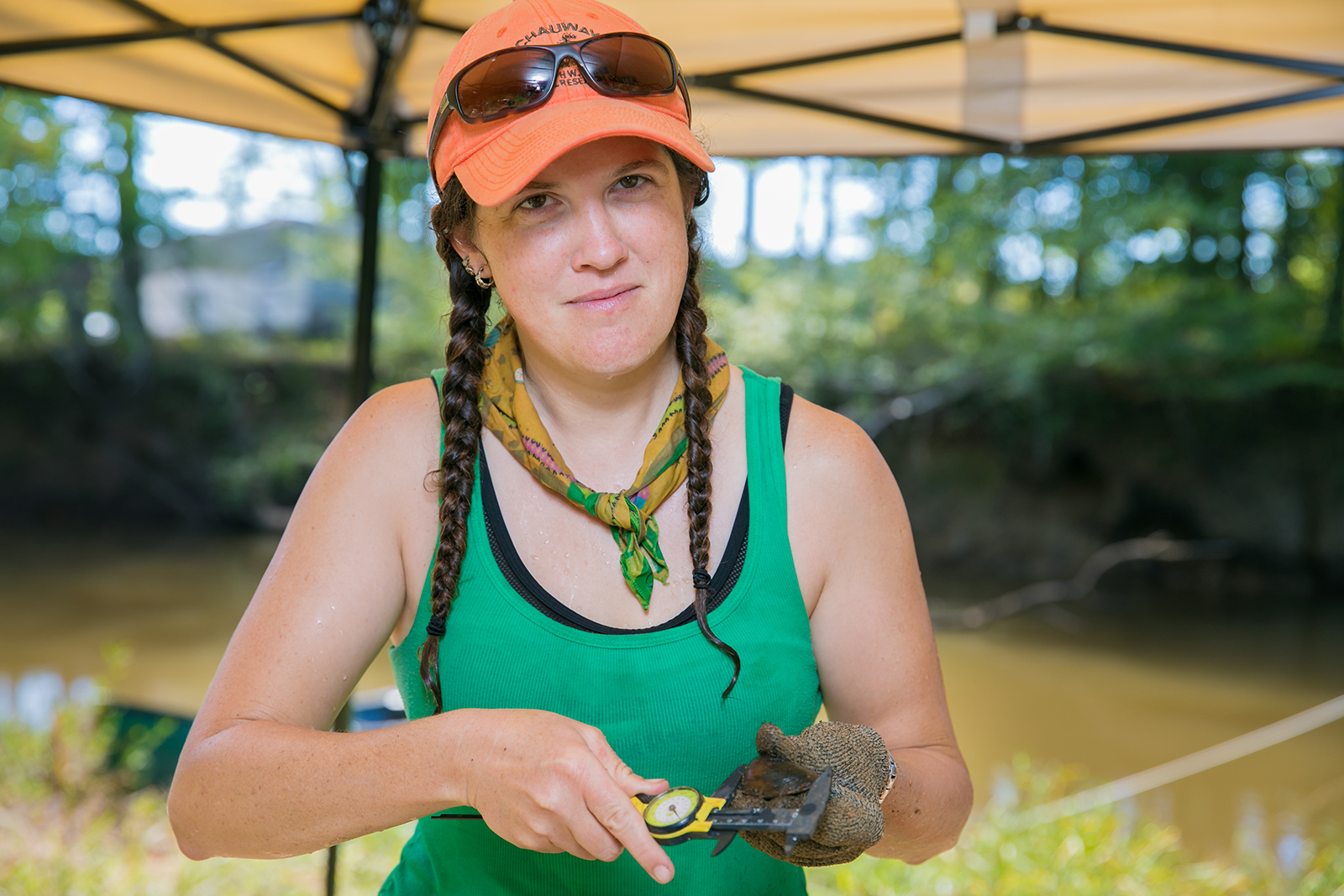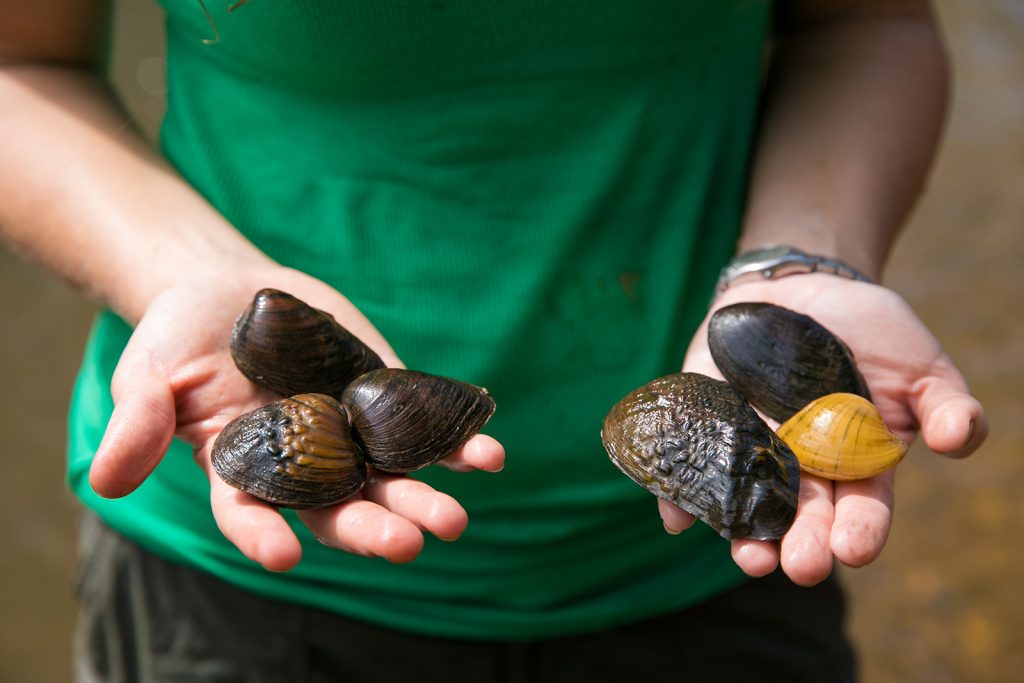
UA Researchers Helping Imperiled Freshwater Mussels
It might have appeared prospectors were panning for gold and minerals on the banks of a small river in rural Alabama. It wasn’t gold this group sought, but another rare find.
As they sifted through bags of dirt and rocks dug from the river’s bottom, they found the buried living treasures: freshwater mussels. In an effort to help the continued existence of the mussels, the researchers on the banks of the Sipsey River hope to reveal more about them.
Freshwater mussels once carpeted the bottom of rivers and creeks throughout the Southeast, cleaning the water by filtering it through their gills while eating.
Alabama is a hotbed for freshwater mussels, with 180 species – about two-thirds of North American species – calling the state’s waterways home.
However, more than half of those are threatened. Across the country, more than 70 percent of freshwater mussels are imperiled as human development has harmed river ecosystems.
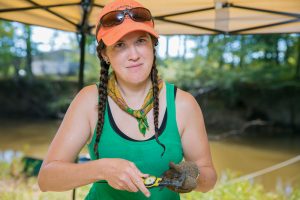
“They’ve become more and more rare over time, and some of these species are never coming back,” said Dr. Carla Atkinson, an ecologist at The University of Alabama. “If we want to make sure our rivers are functioning the way they have historically, we need to step in and do something about it.”
Atkinson is integral to research at UA to help better understand freshwater mussels, improving efforts to conserve and restore the animal to the state’s streams and rivers.
“In order to do recovery, we have to understand the general biology of these organisms,” Atkinson said. “If we’re not putting conservation dollars in the right place, so these animals can actually persist and survive and eventually reproduce, it’s just money down the toilet.”
Not only do mussels maintain and improve water quality through filter feeding, but they change their physical habitat and, in turn, the river’s characteristics such as shape and depth.
Atkinson led a preliminary study that found mussels dislodge smaller sediment particles into the river’s flow and sink larger pieces deeper as they burrow into the riverbed.
The impact could be significant considering mussels live in pockets of huge numbers with some living more than 100 years. It’s a novel idea, and it should be considered when restoring rivers, said Dr. Lisa Davis, a fluvial geomorphologist at UA who studies river erosion and deposition and worked with Atkinson on the project.
“Mussels are an important part of certain rivers in terms of establishing their ecosystem function as well as some of their physical process,” said Davis. “If you look at how rivers are restored today, they don’t always incorporate organisms that might be engineering the environment.”
A lot of the work Atkinson does with mussels is done in the Sipsey River, a meandering, 92-mile river in West Alabama. As one of the last free-flowing rivers in Alabama, it is home to 37 mussel species.
“The Sipsey is a snapshot of what rivers used to be like,” said Davis. “It has, through dumb luck or coincidence, not undergone as much of the land use change and turnover as most rivers in North America. It’s one of our last opportunities to get a handle on what these rivers look like before we drastically modify the landscape.”
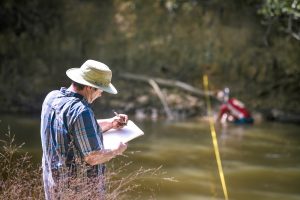
It also has a history of data collection on mussels living in parts of the river, something Atkinson continued and expanded when she came to UA in 2015. She and her graduate students consistently record the river’s temperature and depth along with placement of different types of mussels.
The environmental data can be used in different projects, including a new effort examining how the biodiversity within species of mussels influences their function as filters and engineers of the river.
“We have really high biodiversity in this state, and different species do different things, so you want to have high diversity if you want to maintain those biological functions,” Atkinson said.
Along with Atkinson, the research team includes Dr. Jeff Lozier, a UA geneticist, as well as researchers from the University of Mississippi.
The team is studying mussels from seven rivers, five in Alabama along with one in Tennessee and another in Mississippi, to understand how different species of mussels in the same watershed perform different functions, seeing how environmental factors such as placement, temperature and water flow influence their roles in the river.
They want to know how the filter-feeders avoid direct competition for seemingly the same food. With data and experiments from the field, combined with experiments conducted in the laboratory, the researchers will determine the ecological functions mussels contribute to the river ecosystems.
Lozier, whose background is using the genetics of an animal population to answer evolutionary and ecological questions, is examining the genomes of different mussel species and populations across the study area. That information, combined with environmental data from the field and observations from mussels in the lab, can lead to understanding why different species, or even the same species in different locations, show different levels of genetic variation.
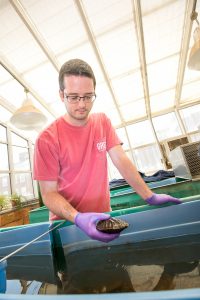
“We’re looking at how genetic variation scales with community-level estimates for mussels and their microbes,” Lozier said. “It’s very rare to have all the community-level data together with all the genetic data and ecological data, so this is a unique project.”
Genomics is also part of another study of freshwater mussels led by Dr. Matthew Jenny, a UA molecular biologist, with Atkinson and Lozier as team members.
Jenny, Lozier and Atkinson are sequencing the genomes of four different species of freshwater mussels to create a tool that could help predict survival for different mussels if the climate warms as predicted. All of the species were found throughout the Southeast before changes to waterways. Now only two continue to thrive while the others’ geographic ranges are limited.
A preliminary study of one of these species pairs led by Jenny at the Alabama Aquatic Biodiversity Center found that mussels with a continued broad range respond better to warmer temperatures than mussels struggling to survive. Even though the two species are genetically similar, sequencing the genomes of both will help the team understand small genetic differences that may alter responses to environmental changes.
“If we know the characteristics present in the one species that is surviving, we can use them as markers for predicting what other species might survive,” Jenny said. “It could be used for making predictions about where to actually attempt restoration efforts.”
The projects from UA researchers will help state conservationists better manage restoration efforts.
“There’s still time,” Atkinson said. “We can do something to try to understand their biology and do something to better protect these areas where biodiversity has hung on.”
Dr. Atkinson is assistant professor of biological sciences, and Drs. Jenny and Lozier are associate professors of biological sciences. Dr. Davis is an associate professor of geography. Some of the work is published in a special issue of Geomorphology, in a paper co-authored by Atkinson and Davis, and the Journal of Experimental Biology, authored by Jenny.
Funding for these projects come from the National Science Foundation, the Alabama Water Institute, the UA Center for Freshwater Studies, U.S. Fish and Wildlife Service, the Alabama Department of Conservation and Natural Resources and the Weyerhaeuser Co.
